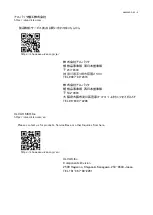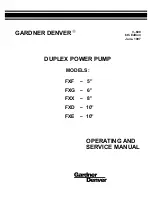
5
3.6 Checking Operation After Installation
1) Remove the rubber caps from the inlet and outlet.
2) Switch off the main power supply, before connecting the power wire from the pump.
Note: Ensure that the power cord is sufficient for the rated voltage and current.
3) Turn the switch ON and check that gas is being drawn into the inlet.
4) When this check is complete, turn the power switch OFF to stop the pump.
3.7 Piping
1) Install piping carefully to prevent leaks.
2) Piping connected to the inlet should be at least 10 mm inside diameter.
3) Maximum back pressure is 0.03 MPa (gauge pressure).
4)
In case of selecting the inlet pipe and exhaust pipe that are not from our products, please select the
exhaust pipe that has same or larger inner diameter length with the inlet pipe.
5) When evacuating a vessel, ensure that a shut-off valve is placed between the pump inlet pipe and
the vessel (see Fig.3-2).
Fig.3-2 Example of Piping Used When Evacuating a Vessel
3.8 Storage
Turn the power off, remove the terminal, place the rubber caps over the inlet and outlet, and store the
pump in an area of low humidity.
If the pump is stored without being operated for a long period of time, there is a possibility that it will
interfere with operation due to the deterioration of the bearings and the formation of rust.
When operating the pump after long-term storage, perform jogging (repeatedly turn the power on and
off three times at intervals of several seconds) to eliminate uneven grease in the bearings.
If any abnormality is found in the pump after long-term storage, please contact our service department
for inspection.
4. Cautions for Operation
4.1 Cautions for Operation
See Danger (1)(2), P04
See Warning (8)(15)(16)(17), P04,05
See Caution (4)(5)(6)(7)(8), P06
See Note (3)(4)(5)(6)(7)(8)(9)(10)(11), P07
Consult the manufacturer if the pump is to be used in a special application.
Vacuum pump
Filter
Leak valve
Shut-off valve Vessel
!
Warning
!
Caution
!
Note
!
Danger










































